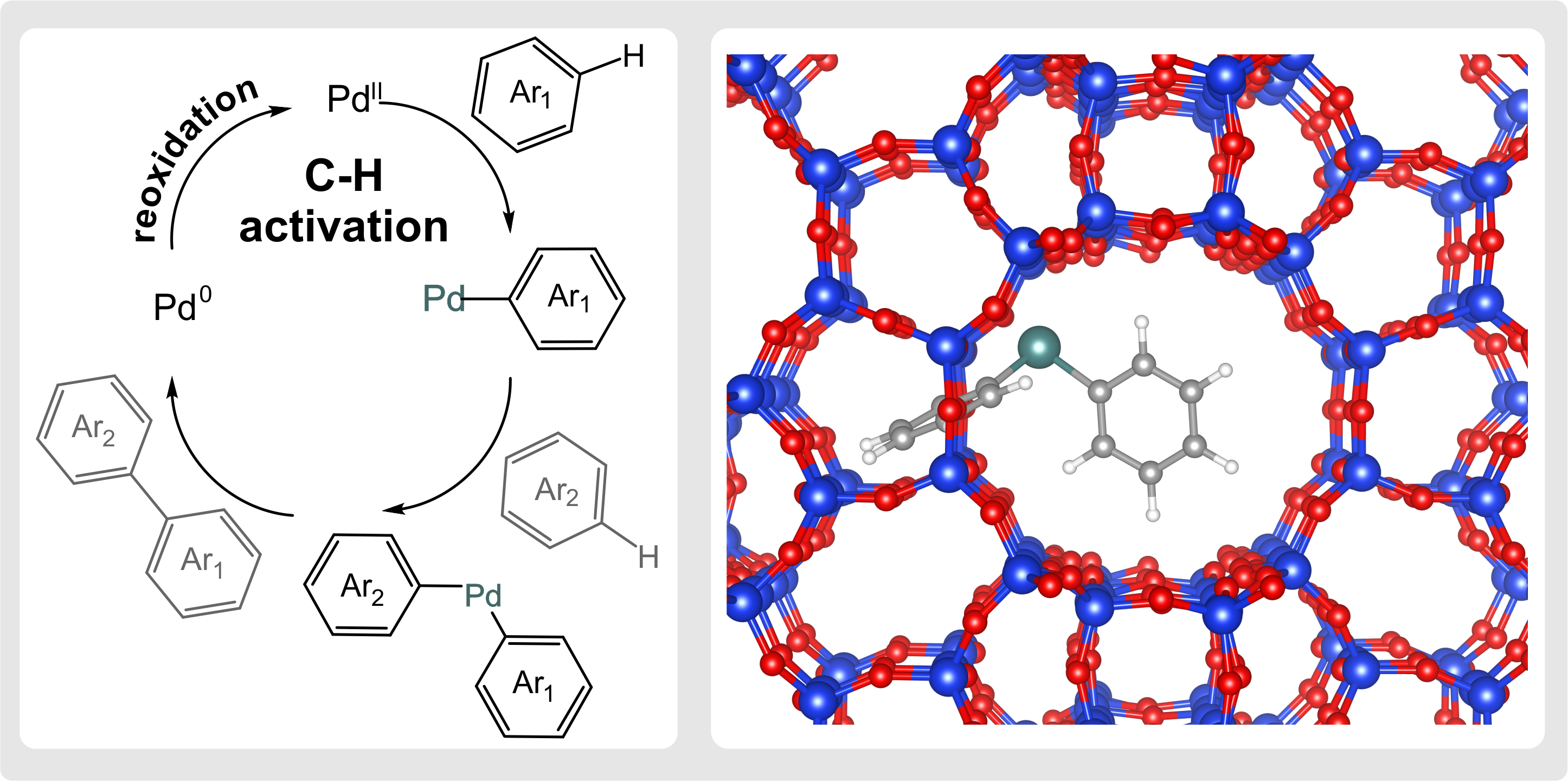Designing selective nanoporous catalysts for aromatic C-H bond activation
Designing selective nanoporous catalysts for aromatic C-H bond activation
Promotor(en): V. Van Speybroeck /18NANO04 / Nanoporous materialsThere is a strong pressure on chemical industry to develop low waste routes, with a minimum number of process steps, for production of high value chemicals. An important reaction is the activation of C-H bonds giving access to synthesize natural products, molecules of pharmaceutical significance as well as advanced polymer precursors.1 Especially pharmaceutical production asks for products that are free of metal traces or residues of reactants, and isomerically pure. This provides a strong driver to invent new routes that activate C-H bonds, e.g. in aromatic molecules as an alternative to the industrially widely practiced Suzuki reaction.2 However, aromatics often contain several C-H bonds, among which most catalysts do not discriminate. Consequently, most homogeneous catalysts (e.g. Pd) produce undesirable mixtures of isomeric product molecules. Recently, it has been discovered that in a shape-selective Pd-zeolite, the C-H activation proceeds so as to form predominantly the (often desired) para-isomer. Alternatively, there are indications that certain Metal-Organic frameworks can also efficiently active inert C-H bonds. We recently discovered a highly dynamic nature of metal-ligand bonds in MOFs, which could open the window towards redox activity.3 Direct functionalization of inert C-H bonds in aromatic compounds is among the reactions that can be catalyzed this way. Despite the fast development in this field, no robust heterogeneous catalysts featuring deactivation-resistant active sites has been found. Such heterogeneous catalyst would solve the problem of product contamination by metals.

Objectives
The aim of this project is to gain a profound understand into the nature of the Pd active site as shown in the Figure. By combining static and molecular dynamics based simulations, the optimal position and stability of the Pd site in the zeolitic and MOF environment will be assessed at realistic operating conditions. Next, a mechanistic study will be conducted to unravel which of the two known pathways dominates the C-H bond activation reactions (see Figure). Ultimately, this should yield clear insights and guidelines for the further development and design of highly selective C-H bond activation catalysts. The theoretical work will be performed in close collaboration with an experimental partner. The Center for Molecular Modeling has gained a lot of experience with modeling catalysis in zeolites and MOFs, and has access to vast computational resources and a broad variety of computational programs to perform such type of simulations. Intensive support will be provided during the project, which is part of a highly active research topic of the group. The proposed topic is challenging and requires technical skills, creativity and chemical insight.
Aspects
Chemical aspect: Structure determination, unraveling reaction mechanisms
Engineering aspect: Application to the catalytic properties of nanoporous materials
- Study programmeMaster of Science in Chemical Engineering [EMCHEM]KeywordsHeterogeneous Catalysis, Zeolites, Metal-organic frameworks, C-H bond activationRecommended coursesMoleculaire modellering van industriële processen, Simulations and Modeling for the NanoscaleReferences
[1] C. Zheng, et al., Rsc Adv., 4 (2014) 6173-6214.
[2] A.J. Lennox, et al., Chem. Soc. Rev., 43 (2014) 412-443.
[3] J. Hajek et al., Chem. Sci. (2018) DOI: 10.1039/C7SC04947A.

